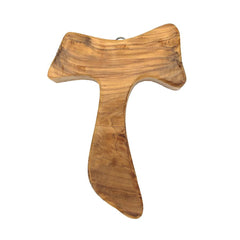Dramatically powerful symbol, it represents the core event of our religion: Jesus Christ’s Crucifixion. It changed its shape several times in the course of time, we even imitate it when facing the trouble or praying. Here are some interesting facts every Christian should know about the Cross.
The Cross
The earliest Christian could not publicly adopt the cross symbol because that would expose them to danger. In fact, the cross did not spread until the reign of Constantine, in the 4th century, as he was the Emperor who extended the religious toleration to the Christianism. So, the images they used as identification themselves were fish, bread, doves, and other types of crosses, such as tau and ankh. Click here if you don't know what they are.
We evoke the crucifixion of Christ in some specific situations, such as prayer, or danger. However, did you know that the sign of the cross isn’t the same for all Christians? For example, it is made with a different hand position by Roman Catholic and Orthodox Christians, plus the latter touch their right shoulder first, then the left.
The Crucifix
And what about crucifix? Literally meaning “fixed to a cross”, it is the graphic representation of suffering and sacrifice of Jesus, that is to say of his crucifixion. It appeared in the 10th century; first used occasionally, it gained importance and is now commonly used in Christian liturgy (less in Protestant Church) and for private devotional use.
So, the difference between the two symbols is crucial, since the crucifix is much more realistic; and it’s precisely the violence of this image that allows some worshippers to connect better to the core principle of the Christian religion, which is love and sacrifice for the neighbor.
Don’t forget to take a look at our collection of crosses and crucifixes, in different shapes, sizes, and materials. Crafted with love in the very heart of Italy.
Latin Cross
In Latin crux immissa, it is the type of cross on which Christ died.
Jerusalem Cross
This variant of Christian cross has a large central cross potent, featuring four small Greek crosses — in Latin cruz quadrata, it's characterized by four equal arms — in each quadrant.
Saint Andrew's Cross
In Latin crux decussata, it is commonly called X-shaped cross. Saint Andrew, who died as a Christian martyr, requested to be crucified on a cross different from that of the Savior, as he considered himself inferior to Christ.
Saint Anthony's Cross or Franciscan Tau Cross
The technical term for this kind of cross is Tau cross or crux commissa. It was traditionally the variant of cross with which the Antonines marked their religious habit.
Orthodox Cross
The Russian Orthodox cross has two extra beams — the upper one features the inscription in Latin INRI, which stands for Iesus Nazarenus Rex Iudaeorum, meaning "Jesus of Nazareth, King of the Jews". The bottom one is Christ's footrest.
Related posts:
















